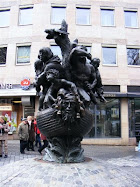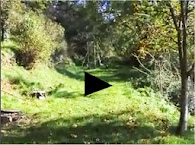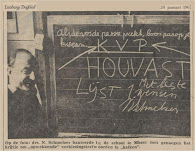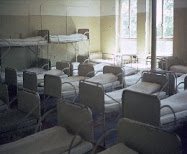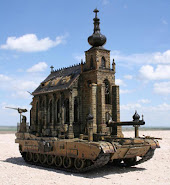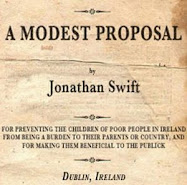zondag, april 29, 2012
Rape Reporting During War Why the Numbers Don't Mean What You Think They Do
bron Human Security Gateway
AMBER PETERMAN is a Gender and Development Specialist and Research Fellow at the International Food Policy Research Institute. DARA KAY COHEN is Assistant Professor at the Hubert H. Humphrey School of Public Affairs at the University of Minnesota. TIA PALERMO is Assistant Professor in the Graduate Program in Public Health at Stony Brook University.
AMELIA HOOVER GREEN is a Ph.D. Candidate in Political Science at Yale University and a consultant to U.N. Action Against Sexual Violence in Conflict.
Reports of sexual violence during the ongoing unrest in Libya have captured headlines across the world. Libyan leader Muammar al-Qaddafi's forces, some have alleged, were given Viagra to facilitate their rape of hundreds, if not thousands, of victims. Recently, Luis Moreno-Ocampo, the chief prosecutor at the International Criminal Court, and U.S. Secretary of State Hillary Clinton both expressed outrage at what was apparently a purposeful campaign.
 Yet recent reports [1] by the U.N. and by advocacy groups shed doubt on these claims. Amnesty International, for example, has been unable [2] to locate a single rape victim, or even anyone who knows a victim.
Yet recent reports [1] by the U.N. and by advocacy groups shed doubt on these claims. Amnesty International, for example, has been unable [2] to locate a single rape victim, or even anyone who knows a victim.
As the veracity of stories about sexual violence in Libya came into question, the American Journal of Public Health published a study estimating that the prevalence of rape in the Democratic Republic of the Congo was far worse than previously documented.
The article estimated [3] that between 2006 and 2007 more than 400,000 women between the ages of 15 and 49 were raped during the war there -- 26 times the U.N.'s official count.
So what are we to make of these two cases -- a possible exaggeration of rape in Libya and a gross underestimation of it in the DRC?
 Wartime sexual violence has rightly been called a hidden epidemic; in truth, we know very little about its actual magnitude and impact. Reports of rape are increasingly common in countries wracked by conflict, such as Colombia, the DRC, East Timor, Côte d'Ivoire, Libya, and Sudan, but no one knows what the relationship is between increased reports and increased rape.
Wartime sexual violence has rightly been called a hidden epidemic; in truth, we know very little about its actual magnitude and impact. Reports of rape are increasingly common in countries wracked by conflict, such as Colombia, the DRC, East Timor, Côte d'Ivoire, Libya, and Sudan, but no one knows what the relationship is between increased reports and increased rape.
Even in peacetime, sexual violence is severely and unevenly underreported. Beyond prevalence, patterns of where, when, and by whom rape is committed -- not to mention why it is committed -- are even less clear.
War exponentially worsens these problems. As a result, estimates of rape in prominent conflicts are often unreliable.
The lack of clarity about wartime sexual violence is hardly surprising. Wartime rape is violent and brutal. Few of us want to think about it, talk about it, or read about it. Even when it does make headlines, it is the sensational details, not meaningful analysis of patterns and causes, that are often reported. And researchers are as apt asanyone to look away.
The study of wartime rape has been marginalized as a "feminist" or "gender" issue.
For many years, research on sexual violence was considered too unseemly a topic for top academic publications.
Social scientists and statisticians rarely collect systematic data on wartime rape; instead, they frequently rely on victim narratives recorded by human rights advocates, aid workers, and journalists; as well as law enforcement reports; and hospital records.
Although often profoundly moving and rich with detail, victim narratives cannot replace rigorous large-scale analyses. And all three sources can misrepresent wartime rape in a number of important ways, primarily by undercounting it. Because of stigma, shame, and the perceived impunity of the perpetrators, very few victims report their assaults. Likewise, only a small proportion of victims -- those with the most severe injuries or with the best access to facilities -- seek clinical care. During war, moreover, murder can follow rape; in such cases, the victim's story is buried with her or, less frequently, him. Uniform undercounting, moreover, is not the only problem. Victims who have been publicly gang raped may have less to lose by reporting the crime. But for the thousands raped in private, reporting it -- even anonymously -- may seem not worth the risk. In such cases, some types of victims may be better counted than others, distorting researchers' understanding of the crime.
Perhaps surprisingly, overcounting also is a concern. Mats Utas, a cultural anthropologist, has noted [4] that "every single" female Sierra Leonean refugee he interviewed as part of his research in Liberia reported being raped.
In Utas' view, the refugees sensed that reporting rape was an efficient way to procure material assistance from aid agencies. Some experts on sexual violence in the DRC have suggested that a similar dynamic is at work there.
According to Maria Eriksson Baaz and Maria Stern [5], the growing focus of the media, aid organizations, and the international community on helping victims of sexual violence has come at the expense of other programs.
They argue that a lack of interest [6] in maternal health care, women's economic empowerment, and political participation incentivizes women to present themselves as rape victims in order to access basic health care services.
So the majority of rape estimates are really nothing more than highly educated guesswork. Yet some of the world's most trusted international news sources have cited as fact statistics that are implausible on their face. A 2002 BBC article [7], citing an advocacy organization, stated that "a girl born in South Africa will have a greater chance of being raped than learning how to read." It is true that South Africa has one of the highest rates of sexual violence in the world, but it is almost certainly not true that the rape rate surpasses 97.5 percent, which is the U.N. estimate [8] for literacy among females aged 15 to 24 in South Africa.
Similarly, prominent advocacy organizations and media outlets have reported that 75 percent of Liberian women suffered wartime rape. The best available survey data indicates the number is closer to ten to twenty percent -- a staggering problem, but nothing close to what has become the conventional wisdom, which seems to have arisen from a misinterpretation of a small-scale study.
Presenting extrapolations as fact hurts efforts to prevent and address wartime sexual violence. Falsely specific figures may attract the attention of an otherwise apathetic public, but they may also endanger future victims of rape. Will anyone care if "only" five percent of women get raped in the next civil war?
Better prevention efforts require better analysis, which requires better evidence.
Major players have already started to take that need seriously. In December 2010, the U.N. Security Council adopted Resolution 1960, which calls for a commitment to "enhance data collection and analysis of incidents, trends, and patterns of rape and other forms of sexual violence" to inform and improve policy initiatives. The U.N. has committed considerable resources to this goal, including creating an internal umbrella group, the U.N. Action Against Sexual Violence in Conflict [9], which aims to improve coordination between other U.N. agencies, amplify programming and advocacy, and support national efforts to prevent sexual violence.
But further efforts are needed. Researchers must also approach the problem of sexual violence more broadly, expanding their studies beyond the rape of women to include forced marriage by abduction, sexual mutilation and torture, sex trafficking, forced prostitution, forced abortion, forced sterilization, and sexual violence against men [10]. Meanwhile, they must stop relying on "emergency data" -- numbers based on rapid assessments or careless extrapolations -- and instead invest in less immediate, but more accurate, studies on the prevalence and causes of sexual violence. Of course, no single analysis can provide the "final answer," but more comprehensive studies are a good place to start.
To address reporting problems, researchers should consider including culturally appropriate questions about sexual violence in routine large-scale health and demographic surveillance surveys. And although recent U.N. Security Council resolutions have specifically demanded numbers, the international community must reconsider its insistence on statistics. Such an emphasis encourages the proliferation of "false facts" about sexual violence and does little to aid understanding. It is essential that researchers, journalists, and policymakers cite credible data sources, lest they undermine their own efforts. Most important, policymakers must ensure that a focus on sexual violence does not crowd out other equally vital wartime issues, such as basic health care, displacement, and inequality.
Rape is not a distant, gruesome, inexplicable atrocity that takes place in "other countries" to "other people."
Rape takes place every day, in every country, during war and during peace, to every type of person. But sexual violence is not inevitable. To work meaningfully toward prevention, and to assist rape victims with recovery and rehabilitation, the world needs better information -- not simply more information.
Links:
[1] http://www.vancouversun.com/story_print.html?id=4928382&sponsor=
[2] http://www.independent.co.uk/news/world/africa/amnesty-questions-claim-that-gaddafi-ordered-rape-as-weapon-of-war-2302037.html
[3] http://www.ncbi.nlm.nih.gov/pubmed/21566049
[4] http://muse.jhu.edu/journals/anthropological_quarterly/v078/78.2utas.html
[5] http://nai.diva-portal.org/smash/get/diva2:319527/FULLTEXT02
[6] http://www.theatlantic.com/international/archive/2011/05/do-we-have-the-congo-rape-crisis-all-wrong/239328/
[7] http://news.bbc.co.uk/2/hi/1909220.stm
[8] http://www.unicef.org/infobycountry/southafrica_statistics.html
[9] http://www.stoprapenow.org
[10] http://sdi.sagepub.com/content/37/1/83.short
| Type : | Report |
| Title : | Rape Reporting During War: Why the Numbers Don't Mean What You Think They Do |
| Source : | Foreign Affairs // The Council on Foreign Relations |
| Date Added: | 26-Apr-2012 |
| Publication Date : | 1-Aug-2011 |
| URL : | http://iis-db.stanford.edu/pubs/23295/Cohen_Rape_Reporting_During_War. |
| Amber Peterman, Dara Kay Cohen, Tia Palermo, and Amelia Hoover Green |
AMBER PETERMAN is a Gender and Development Specialist and Research Fellow at the International Food Policy Research Institute. DARA KAY COHEN is Assistant Professor at the Hubert H. Humphrey School of Public Affairs at the University of Minnesota. TIA PALERMO is Assistant Professor in the Graduate Program in Public Health at Stony Brook University.
AMELIA HOOVER GREEN is a Ph.D. Candidate in Political Science at Yale University and a consultant to U.N. Action Against Sexual Violence in Conflict.
Reports of sexual violence during the ongoing unrest in Libya have captured headlines across the world. Libyan leader Muammar al-Qaddafi's forces, some have alleged, were given Viagra to facilitate their rape of hundreds, if not thousands, of victims. Recently, Luis Moreno-Ocampo, the chief prosecutor at the International Criminal Court, and U.S. Secretary of State Hillary Clinton both expressed outrage at what was apparently a purposeful campaign.
 Yet recent reports [1] by the U.N. and by advocacy groups shed doubt on these claims. Amnesty International, for example, has been unable [2] to locate a single rape victim, or even anyone who knows a victim.
Yet recent reports [1] by the U.N. and by advocacy groups shed doubt on these claims. Amnesty International, for example, has been unable [2] to locate a single rape victim, or even anyone who knows a victim.The article estimated [3] that between 2006 and 2007 more than 400,000 women between the ages of 15 and 49 were raped during the war there -- 26 times the U.N.'s official count.
So what are we to make of these two cases -- a possible exaggeration of rape in Libya and a gross underestimation of it in the DRC?
 Wartime sexual violence has rightly been called a hidden epidemic; in truth, we know very little about its actual magnitude and impact. Reports of rape are increasingly common in countries wracked by conflict, such as Colombia, the DRC, East Timor, Côte d'Ivoire, Libya, and Sudan, but no one knows what the relationship is between increased reports and increased rape.
Wartime sexual violence has rightly been called a hidden epidemic; in truth, we know very little about its actual magnitude and impact. Reports of rape are increasingly common in countries wracked by conflict, such as Colombia, the DRC, East Timor, Côte d'Ivoire, Libya, and Sudan, but no one knows what the relationship is between increased reports and increased rape.Even in peacetime, sexual violence is severely and unevenly underreported. Beyond prevalence, patterns of where, when, and by whom rape is committed -- not to mention why it is committed -- are even less clear.
War exponentially worsens these problems. As a result, estimates of rape in prominent conflicts are often unreliable.
The lack of clarity about wartime sexual violence is hardly surprising. Wartime rape is violent and brutal. Few of us want to think about it, talk about it, or read about it. Even when it does make headlines, it is the sensational details, not meaningful analysis of patterns and causes, that are often reported. And researchers are as apt asanyone to look away.
The study of wartime rape has been marginalized as a "feminist" or "gender" issue.
For many years, research on sexual violence was considered too unseemly a topic for top academic publications.
Social scientists and statisticians rarely collect systematic data on wartime rape; instead, they frequently rely on victim narratives recorded by human rights advocates, aid workers, and journalists; as well as law enforcement reports; and hospital records.
Although often profoundly moving and rich with detail, victim narratives cannot replace rigorous large-scale analyses. And all three sources can misrepresent wartime rape in a number of important ways, primarily by undercounting it. Because of stigma, shame, and the perceived impunity of the perpetrators, very few victims report their assaults. Likewise, only a small proportion of victims -- those with the most severe injuries or with the best access to facilities -- seek clinical care. During war, moreover, murder can follow rape; in such cases, the victim's story is buried with her or, less frequently, him. Uniform undercounting, moreover, is not the only problem. Victims who have been publicly gang raped may have less to lose by reporting the crime. But for the thousands raped in private, reporting it -- even anonymously -- may seem not worth the risk. In such cases, some types of victims may be better counted than others, distorting researchers' understanding of the crime.
Perhaps surprisingly, overcounting also is a concern. Mats Utas, a cultural anthropologist, has noted [4] that "every single" female Sierra Leonean refugee he interviewed as part of his research in Liberia reported being raped.
In Utas' view, the refugees sensed that reporting rape was an efficient way to procure material assistance from aid agencies. Some experts on sexual violence in the DRC have suggested that a similar dynamic is at work there.
According to Maria Eriksson Baaz and Maria Stern [5], the growing focus of the media, aid organizations, and the international community on helping victims of sexual violence has come at the expense of other programs.
They argue that a lack of interest [6] in maternal health care, women's economic empowerment, and political participation incentivizes women to present themselves as rape victims in order to access basic health care services.
So the majority of rape estimates are really nothing more than highly educated guesswork. Yet some of the world's most trusted international news sources have cited as fact statistics that are implausible on their face. A 2002 BBC article [7], citing an advocacy organization, stated that "a girl born in South Africa will have a greater chance of being raped than learning how to read." It is true that South Africa has one of the highest rates of sexual violence in the world, but it is almost certainly not true that the rape rate surpasses 97.5 percent, which is the U.N. estimate [8] for literacy among females aged 15 to 24 in South Africa.
Similarly, prominent advocacy organizations and media outlets have reported that 75 percent of Liberian women suffered wartime rape. The best available survey data indicates the number is closer to ten to twenty percent -- a staggering problem, but nothing close to what has become the conventional wisdom, which seems to have arisen from a misinterpretation of a small-scale study.
Presenting extrapolations as fact hurts efforts to prevent and address wartime sexual violence. Falsely specific figures may attract the attention of an otherwise apathetic public, but they may also endanger future victims of rape. Will anyone care if "only" five percent of women get raped in the next civil war?
Better prevention efforts require better analysis, which requires better evidence.
Major players have already started to take that need seriously. In December 2010, the U.N. Security Council adopted Resolution 1960, which calls for a commitment to "enhance data collection and analysis of incidents, trends, and patterns of rape and other forms of sexual violence" to inform and improve policy initiatives. The U.N. has committed considerable resources to this goal, including creating an internal umbrella group, the U.N. Action Against Sexual Violence in Conflict [9], which aims to improve coordination between other U.N. agencies, amplify programming and advocacy, and support national efforts to prevent sexual violence.
But further efforts are needed. Researchers must also approach the problem of sexual violence more broadly, expanding their studies beyond the rape of women to include forced marriage by abduction, sexual mutilation and torture, sex trafficking, forced prostitution, forced abortion, forced sterilization, and sexual violence against men [10]. Meanwhile, they must stop relying on "emergency data" -- numbers based on rapid assessments or careless extrapolations -- and instead invest in less immediate, but more accurate, studies on the prevalence and causes of sexual violence. Of course, no single analysis can provide the "final answer," but more comprehensive studies are a good place to start.
To address reporting problems, researchers should consider including culturally appropriate questions about sexual violence in routine large-scale health and demographic surveillance surveys. And although recent U.N. Security Council resolutions have specifically demanded numbers, the international community must reconsider its insistence on statistics. Such an emphasis encourages the proliferation of "false facts" about sexual violence and does little to aid understanding. It is essential that researchers, journalists, and policymakers cite credible data sources, lest they undermine their own efforts. Most important, policymakers must ensure that a focus on sexual violence does not crowd out other equally vital wartime issues, such as basic health care, displacement, and inequality.
Rape is not a distant, gruesome, inexplicable atrocity that takes place in "other countries" to "other people."
Rape takes place every day, in every country, during war and during peace, to every type of person. But sexual violence is not inevitable. To work meaningfully toward prevention, and to assist rape victims with recovery and rehabilitation, the world needs better information -- not simply more information.
Links:
[1] http://www.vancouversun.com/story_print.html?id=4928382&sponsor=
[2] http://www.independent.co.uk/news/world/africa/amnesty-questions-claim-that-gaddafi-ordered-rape-as-weapon-of-war-2302037.html
[3] http://www.ncbi.nlm.nih.gov/pubmed/21566049
[4] http://muse.jhu.edu/journals/anthropological_quarterly/v078/78.2utas.html
[5] http://nai.diva-portal.org/smash/get/diva2:319527/FULLTEXT02
[6] http://www.theatlantic.com/international/archive/2011/05/do-we-have-the-congo-rape-crisis-all-wrong/239328/
[7] http://news.bbc.co.uk/2/hi/1909220.stm
[8] http://www.unicef.org/infobycountry/southafrica_statistics.html
[9] http://www.stoprapenow.org
[10] http://sdi.sagepub.com/content/37/1/83.short
I
papa fume la pipe sur le mur
 Adieu, séjour de mon enfance,
Adieu, séjour de mon enfance,Adieu Rolduc, aimable lieu!
Rolduc, où règnent l’ innocence,
La paix et le bonheur, adieu!
Je pars pour consoler un père;
Adieu , riant séjour des bois!
Je suis au bout de ma carrière,
Salut pour la dernière fois,
Je suis au bout de ma carrière,
Salut pour la dernière fois!
Ik was een paar jaar geleden op een studiedag.
Deel van het programma was een man die prachtig kan vertellen, waardoor de harp die bij zijn programma hoort zelfs acceptabel is.
Vooraf aan zijn verhalenprogramma vertelde hij kort iets over zijn pastorale praktijk in de VS., gevangeniswerk. En Bachluisteraars.
Hij verdiende een blauw oog.
Ik gaf hem niet waar hij recht op had, verliet heel christelijk de zaal.
Zijn verdere publiek was katholiek. Zij deden zich te goed aan Bach
zaterdag, april 28, 2012
"Get these dinosaurs out!! Let our histories be visible"
 Na een probleem vorige week
Na een probleem vorige week discouraged man with hearing difficulties seeking pastoral help in new parish maar kan na het bereidwillig urenlang gezamelijk gebed de vraag "En?" slechts met "dat weet ik volgende week pas" beantwoorden , kennen ze het probleem nu ook in Canada
Maar wie roept er nu "Get these dinosaurs out!!
Let our histories be visible"?
vrijdag, april 27, 2012
Laat ons de kinderen de wereld cadeau doen
You are my freedom,
You are my body
Hot as a naked night in July,
You are my Motherland!
Nazim Hikmet
Com os lábios de dizer nova poesia
Soletram as estrelas como letras
E vão juntando no céu como pedrinhas
Estrelas letras para fazer novas palavras
Os meninos à volta da fogueira
Vão aprender coisas de sonho e de verdade
Vão aprender como se ganha uma bandeira
Vão saber o que custou a liberdade
Com os sorrisos mais lindos do planalto
Fazem continhas engraçadas de somar
Somam beijos com flores e com suor
E subtraem manhã cedo por luar
Dividem a chuva miudinha pelo milho
Multiplicam o vento pelo mar
Soltam ao céu as estrelas já escritas
Constelações que brilham sempre sem parar
Rui Monteiro
donderdag, april 26, 2012
Ananas, farao
 Que me importa ganar diez
Que me importa ganar diez si se contar hasta seis
1946
1911
Die Canadezen hebben een hele enge foto in hun archieven zitten, eigenlijk twee - Aletta heeft professor Tulp jou uitgelegd wat dat mannetje met een pijp in z'n mond in 1890 bij dat lijk waaraan Clara Mary Olding leerde snijden staat te doen? - want als we op deze manier door gaan wat ziet iemand over 120 jaar die kijkt naar de foto van het naamfeest van Germana als zij/hij al die mannetjes in overal met de patat van Simon de Wit bekijkt dan?
En wie heeft in die envelop dat briefje over vadertje T. waar ik zo'n lol in had dat het ter plekke onmogelijk was het nageslacht mijn faraoische groet te onthouden dan gevonden, professor Barabas ?
En zou dat geweldige plezier, uiteindelijk over de fout die mijn vader maakte, en de opluchting dat de man goddank helemaal geen tuinpad maar gewoon zo'n Amsterdams plaatsje met een eierkolenantraciethok had dan de non-PTSS zijn, Heer Starrenburg?
En wie heeft in die envelop dat briefje over vadertje T. waar ik zo'n lol in had dat het ter plekke onmogelijk was het nageslacht mijn faraoische groet te onthouden dan gevonden, professor Barabas ?
En zou dat geweldige plezier, uiteindelijk over de fout die mijn vader maakte, en de opluchting dat de man goddank helemaal geen tuinpad maar gewoon zo'n Amsterdams plaatsje met een eierkolenantraciethok had dan de non-PTSS zijn, Heer Starrenburg?
woensdag, april 25, 2012
Foute Keuze wij zaten allemaal in het verzet, behalve Wankja die Iwan heette
Bron
Foute Keuze
Mijn naam is Auke Siebe Dirk
Ik ben vernoemd naar mijn oudoom Dirk Siebe
Een jongen die een verkeerde keuze heeft gemaakt
Koos voor een verkeerd leger
Met verkeerde idealen
Vluchtte voor de armoede
Hoopte op een beter leven
Geen weg meer terug
Als een keuze is gemaakt
Alleen een weg vooruit
Die hij niet ontlopen kan
Vechtend tegen Russen
Angst om zelf dood te gaan
Denkend aan thuis
Waar Dirk z’n toekomst nog beginnen moet
Zijn moeder is verscheurd door de oorlog
Mama van elf kinderen, waarvan vier in het verzet zitten
En een vechtend aan het oostfront
Alle elf had ze even lief
Dirk Siebe kwam nooit meer thuis
Mijn naam is Auke Siebe Dirk
Ik ben vernoemd naar Dirk Siebe
Omdat ook Dirk Siebe niet vergeten mag worden.
Auke (15)
Foute Keuze
Mijn naam is Auke Siebe Dirk
Ik ben vernoemd naar mijn oudoom Dirk Siebe
Een jongen die een verkeerde keuze heeft gemaakt
Koos voor een verkeerd leger
Met verkeerde idealen
Vluchtte voor de armoede
Hoopte op een beter leven
Geen weg meer terug
Als een keuze is gemaakt
Alleen een weg vooruit
Die hij niet ontlopen kan
Vechtend tegen Russen
Angst om zelf dood te gaan
Denkend aan thuis
Waar Dirk z’n toekomst nog beginnen moet
Zijn moeder is verscheurd door de oorlog
Mama van elf kinderen, waarvan vier in het verzet zitten
En een vechtend aan het oostfront
Alle elf had ze even lief
Dirk Siebe kwam nooit meer thuis
Mijn naam is Auke Siebe Dirk
Ik ben vernoemd naar Dirk Siebe
Omdat ook Dirk Siebe niet vergeten mag worden.
Auke (15)
dinsdag, april 24, 2012
Redress
"
...Bijlage: brief compensatiecommissie
Geachte heer XXXXX,
Ik heb onderstaande mailwisseling gelezen; we hebben elkaar recentelijk al gesproken over uw afschuwelijke verleden. Zoals de compensatiecommissie u schriftelijk heeft laten weten bent u definitief ingedeeld in categorie 5, hetgeen wil zeggen dat de compensatiecommissie in uw geval van mening is dat er sprake is geweest van zeer ernstig seksueel misbruik. Dat laat onverlet dat u de compensatiecommissie op grond van de regeling wel in staat moet stellen om de hoogte van het compensatiebedrag te kunnen bepalen:
De regeling zegt hierover:
Categorie 5
Artikel 19:
In alle gevallen van indeling in categorie 5 krijgt de aanvrager gelegenheid om de omvang van de door hem gestelde vermogensschade en het causaal verband met het seksueel misbruik zoals
dat blijkt uit het bewijs toe te lichten. Deze toelichting geschiedt in beginsel schriftelijk. De betrokken R.-K. instelling wordt gelegenheid gegeven tot verweer.
Artikel 20:
In alle gevallen van indeling in categorie 5 kan de Compensatiecommissie verlangen dat de aanvrager zich onderwerpt aan medische of psychologische expertise door deskundigen als door de
Compensatiecommissie aangewezen. De kosten van deze expertise worden voorgeschoten door de Compensatiecommissie en komen ten laste van de betrokken R.-K. instelling.
Artikel 21:
In geval de Compensatiecommissie binnen een categorie 5 procedure een verschijning van partijen verlangt ter zitting, bepaalt de Compensatiecommissie voor die zitting locatie, datum en
tijdstip. De datum en het tijdstip worden zoveel mogelijk vastgesteld na overleg met de aanvrager en betrokken R.-K. instelling. Een zitting kan worden bijgewoond door een externe deskundige aangesteld door de Compensatiecommissie. Orde en verloop van de zitting worden door de Compensatiecommissie bepaald.
Artikel 22:
In alle gevallen van een definitieve indeling in categorie 5 komen de redelijke kosten van rechtsbijstand van de aanvrager gemaakt in de procedure ten overstaan van de
Compensatiecommissie voor vergoeding door de betrokken R.-K. instelling in aanmerking, tot een maximum gelijk aan 15% van de toe te wijzen compensatie.
Met het indienen van de aanvraag heeft u verklaard met de inhoud van de compensatieregeling akkoord te gaan. Hoewel ik mij uw aarzeling goed begrijp om aan het verzoek van de compensatiecommissie in deze te voldoen, raad ik u toch in uw eigen belang aan om samen met uw juridisch adviseur de gevraagde onderbouwing zo compleet mogelijk aan te leveren.
Met vriendelijke groeten, "
maandag, april 23, 2012
zondag, april 22, 2012
De Elandsstraat; Moes crossing

 1951 Overste Gregorius van Buuren en hiërarchisch gevlag tussen RK Jongensweeshuis links en 't Aloysius
1951 Overste Gregorius van Buuren en hiërarchisch gevlag tussen RK Jongensweeshuis links en 't Aloysius
foto fauna5
ananas
Je zou er van gaan kwispelen
Werk in uitvoering
klik


The shrine is found in the miniature church which was moved from its original location in 1967 by the Brothers of Our Lady of Seven Sorrows to Mabou. The small white church was repaired and restored and was officially opened as a shrine in July 1968 and is dedicated to Our Lady of Sorrows and the pioneers of the Mabou area.
The route taken to move the church - 18km long. A shorter way couldn't be taken because of a bridgespan at Nicholson's Island.
Climbing the hill on to mabou ridge road - you can see St. Mary's Parish Church (the one in my first blog) in the background. The power corporation lead all the way to clear the lines.
St Mary's
bron Beth Legg, 2008
Three Roman Catholic churches to close by July
6 Jan 2012
Labels:
canada,
Europa,
gebruik grenzen,
Nederland,
OLV 7 smarten,
verknipt
zaterdag, april 21, 2012
Mil grullas; Those Laboratory Mice Were Children
foto Karlos Zurutuza
IPSKarlos Zurutuza
FALLUJAH, Iraq, Apr 13, 2012 (IPS) - At Fallujah hospital they cannot offer any statistics on children born with birth defects – there are just too many. Parents don’t want to talk. "Families bury their newborn babies after they die without telling anyone," says hospital spokesman Nadim al-Hadidi. "It’s all too shameful for them."
"We recorded 672 cases in January but we know there were many more," says Hadidi. He projects pictures on to a wall at his office: children born with no brain, no eyes, or with the intestines out of their body.
Facing a frozen image of a child born without limbs, Hadidi says parents’ feelings usually range between shame and guilt. "They think it’s their fault, that there’s something wrong with them. And it doesn’t help at all when some elder tells them it’s been ‘god’s punishment’."
The pictures are difficult to look at. And, those responsible for all this have closed their eyes.
"In 2004 the Americans tested all kinds of chemicals and explosive devices on us: thermobaric weapons, white phosphorous, depleted uranium...we have all been laboratory mice for them," says Hadidi, turning off the projector.
The months that followed the invasion of Iraq in 2003 saw persistent demonstrations against the occupation forces. But it wasn’t until 2004 when this city by the Euphrates river to the west of Baghdad saw its worst.
On Mar. 31 of that year, images of the dismembered bodies of four mercenaries from the U.S. group Blackwater hanging from a bridge circulated around the world. Al-Qaeda claimed the brutal action - and the local population paid the price for Operation Phantom Fury that followed. According to the Pentagon, this was the biggest urban battle since Hue (Vietnam, 1968).
The first crackdown came in April 2004 but the worst was in November of that year. Random house-to- house checks gave way to intense night bombings. The Americans said they used white phosphorus "to illuminate targets at night." But a group of Italian journalists soon gave documentary evidence that white phosphorus had been just another of the banned weapons used against civilians by the U.S. troops.
The total number of victims is still unknown. In fact, many of them are not born yet.
Abdulkadir Alrawi, a doctor at Fallujah hospital, is just back from examining an intriguing new case. "This girl was born with the Dandy Walker syndrome. Her brain is split in two and I doubt she’ll survive." As he speaks, the lights go off again in the whole hospital.
"We lack the most basic infrastructure, how do they want us to cope with an emergency like this?"
According to a study released by the Switzerland-based International Journal of Environmental Research and Public Health in July 2010, "the increases in cancer, leukaemia and infant mortality and perturbations of the normal human population birth sex ratio in Fallujah are significantly greater than those reported for the survivors of the A-Bombs at Hiroshima and Nagasaki in 1945."
Researchers found there had been a 38-fold increase in leukaemia (17-fold in the Japanese locations). Reputed analysts such as Noam Chomsky have labelled such conclusions as "immensely more embarrassing than the Wikileaks leaks on Afghanistan."
Samira Alaani, chief doctor at Fallujah hospital, took part in a study in close collaboration with the World Health Organisation. Several tests conducted in London point to unusually large amounts of uranium and mercury in the hair root of those affected. That could be the evidence linking the use of prohibited weapons to the extent of congenital problems in Fallujah.
Other than the white phosphorus, many point to depleted uranium (DU), a radioactive element which, according to military engineers, significantly increases the penetration capacity of shells. DU is believed to have a life of 4.5 billion years, and it has been labelled the "silent murderer that never stops killing." Several international organisations have called on NATO to investigate whether DU was also used during the Libyan war.
This month the Iraqi Health Ministry, in close collaboration with the WHO, will launch its first study ever on congenital malformations in the governorates of Baghdad, Anbar, Thi Qar, Suleimania, Diala and Basra.
Sandwiched between the borders of Iran and Kuwait, Basra sits above massive oil reserves. The population in this southernmost province has suffered fighting much more than any other region: from the war with Iran in the 1980s to the Gulf War in 1991 and the U.S.-led invasion in 2003.
A study by the University of Baghdad pointed out that cases of birth defects had increased tenfold in Basra two years before the invasion in 2003. The trend is still on the rise.
Basra Children's Hospital, specialising in paediatric oncology, opened in 2010. Funded with U.S. capital, this facility was initiated by former U.S. first lady Laura Bush. But like the hospital in Fallujah, this supposedly state-of-the-art facility lacks basic equipment.
"The X-ray machine spent over a year-and-a-half stored at Basra port due to an administrative dispute over who should pay port fees. Our children would die as they waited for radiotherapy treatment that did not come," says Laith Shakr Al-Sailhi, father of a sick boy and director of the Children's Cancer Association of Iraq.
"The waiting list for treatment in Baghdad is endless and time is never on the side of the patients," says Al- Sailhi from the barracks that host his NGO headquarters next to the hospital.
"Besides, these children's diseases also lead to economic ruin of their families. Those who can afford it pay up to 7,000 dollars in Syria or up to 12,000 dollars in Jordan for treatment. The cheapest option is Iran, with rates at an average of 5,000 dollars.
"Today, families are flocking to Tehran for their children to be treated. Many of them are sleeping in the streets because they can't afford to pay a hotel room." (END)
vrijdag, april 20, 2012
donderdag, april 19, 2012
Bezuinigingen Gezondheidszorg overheveling taak GGD naar OVT
Dus dan nu maar bidden dat die kinderen van de politiek dekking zoekende econoom bisdom Rotterdam, voorzitter van het Economencollege van de Nederlandse Kerkprovincie zo goed willen zijn ook zondag op zijn bank te willen zitten, kan de man, de wonderen zijn de wereld tenslotte nog niet uit , zich zo aansluiten bij de volgende stichting, MCU, Zullen me dat even leuke contactgroep bijeenkomsten worden
Wie weet ontdekken ze dan ook nog wel dat binnen het Christendom het niet Klokk is die ze iets had te leren maar die man uit Nazareth
klik 
Overig werk Jan Berkelouw
''....
you're chasing shadows when the truth lies above you
so whatever your truth is, after leaving here, follow the truth and not the shadow of the truth"
MC- Michael McCarthy
closing ceremonies Virginia Regional Event
14-4-2012
De lange wapper: Oproep voor morgen
Vrijwilligers gezocht voor het schrijven van levensboeken
06-04-2012
Het Internationaal Homo- en Lesbisch Informatiecentrum en Archief (IHLIA) en Osira Amstelring gaan beginnen aan het project Levensboeken
waarin de levensverhalen van oudere homomannen en lesbische vrouwen
(LHBT's) centraal zullen staan. Daarvoor worden vrijwilligers gezocht
die het leuk vinden om samen met een oudere homoman of lesbische vrouw
een levensboek te maken.
Het boek is in eerste instantie voor de oudere zelf, maar toch zeker
ook voor IHLIA. Zij willen graag een serie van deze levensboeken opnemen
in hun collectie voor de huidige en toekomstige generaties LHBT's. De
geschiedenissen van onze ‘voorouders’ zullen op deze wijze niet verloren
gaan.Wat moet je zoal doen en kunnen?
Vóór aanvang krijg je van IHLIA een cursus aangeboden van twee dagdelen.
Het maken van het boek houdt vervolgens in dat je ongeveer acht keer een oudere bezoekt en van de verhalen, foto’s, ansichtkaarten, brieven en andere memorabilia een uniek document maakt op je computer.
IHLIA verwacht van je dat je de beschikking hebt over computer en printer, enige mensenkennis hebt, iets weet over d’s en dt’s, én goed kunt luisteren.
Ben je geïnteresseerd en lijkt het je leuk om als vrijwilliger aan dit project mee te werken?
Stuur dan vóór 20 april a.s. een mailtje naar IHLIA-redacteur Connie van Gils.
T is
't Is een raar verhaal.
't Is een triest verhaal
't Is een prachtig verhaal
Maar vooral 't is een verhaal van dat wat niet had gemogen maar er is.
't Is over wat TRC misschien wel is.
't Is een triest verhaal.
Maar misschien is 't wel het verhaal dat minder dan een minuut duurde.
Minder dan 1 minuut voor een camera en een microfoon in een land waar ik waarschijnlijk nooit zal komen en als ik er al zou zijn mijn tijd zou verdoen.
1 minuut van een man met wie ik blij ben over andere mannen met wie ik blij was en 't verdom om me die blijdschap te laten afnemen.
Misschien is 't dan wel 't glazig kijken naar een flapdrol met een krijtje is zijn hand die vond dat hij iets moois had te vertellen en daarom stond te hippen om vervolgens glazig te staan kijken; een haakje en een aatje en een ennetje plus een beetje en dan nog een haakje en een streepje en een nulletje.
Misschien is 't wel alleen maar het verhaal van neuzen.
En ogen van wat waarschijnlijk een hele grote vent is met een verstopte neus.
Dan is 't een triest verhaal
Dan is 't een raar verhaal
Dan is 't een prachtig verhaal
Over dat wonder dat mijn moeder kon.
Alle moeders kunnen pannekoeken bakken. Maar alleen mijn moeder kon zo in je handen wrijven dat je met de tranen in je ogen ontdekte dat je je neus weer voelde waarna je weer kon hippen hoe leuk het buiten was geweest omdat er een krijtje was geweest en een haakje en een aatje en een ennetje plus
't Is een triest verhaal
't Is een prachtig verhaal
Maar vooral 't is een verhaal van dat wat niet had gemogen maar er is.
't Is over wat TRC misschien wel is.
't Is een triest verhaal.
Maar misschien is 't wel het verhaal dat minder dan een minuut duurde.
Minder dan 1 minuut voor een camera en een microfoon in een land waar ik waarschijnlijk nooit zal komen en als ik er al zou zijn mijn tijd zou verdoen.
1 minuut van een man met wie ik blij ben over andere mannen met wie ik blij was en 't verdom om me die blijdschap te laten afnemen.
Misschien is 't dan wel 't glazig kijken naar een flapdrol met een krijtje is zijn hand die vond dat hij iets moois had te vertellen en daarom stond te hippen om vervolgens glazig te staan kijken; een haakje en een aatje en een ennetje plus een beetje en dan nog een haakje en een streepje en een nulletje.
Misschien is 't wel alleen maar het verhaal van neuzen.
En ogen van wat waarschijnlijk een hele grote vent is met een verstopte neus.
Dan is 't een triest verhaal
Dan is 't een raar verhaal
Dan is 't een prachtig verhaal
Over dat wonder dat mijn moeder kon.
Alle moeders kunnen pannekoeken bakken. Maar alleen mijn moeder kon zo in je handen wrijven dat je met de tranen in je ogen ontdekte dat je je neus weer voelde waarna je weer kon hippen hoe leuk het buiten was geweest omdat er een krijtje was geweest en een haakje en een aatje en een ennetje plus
Abonneren op:
Posts (Atom)






































